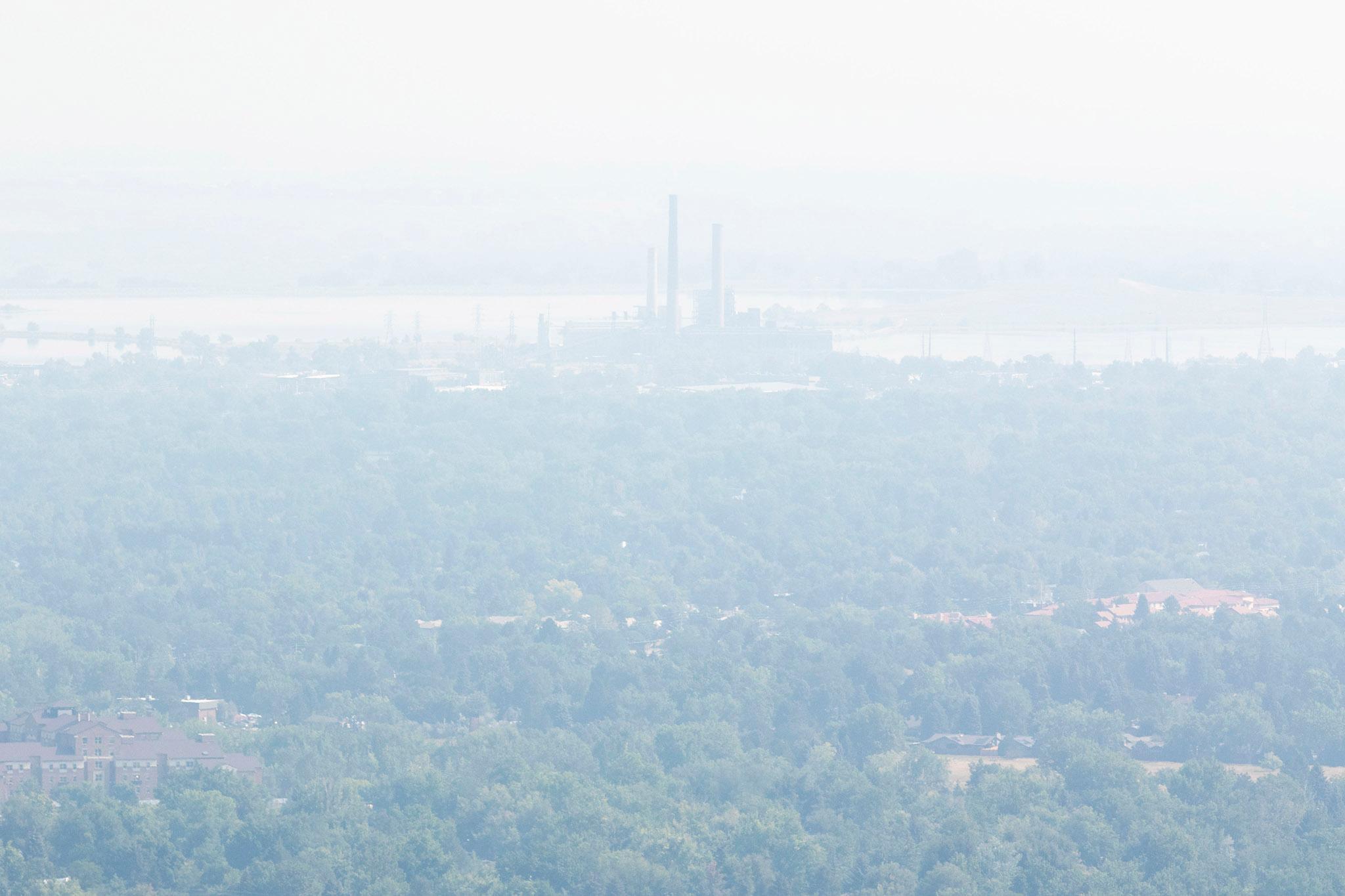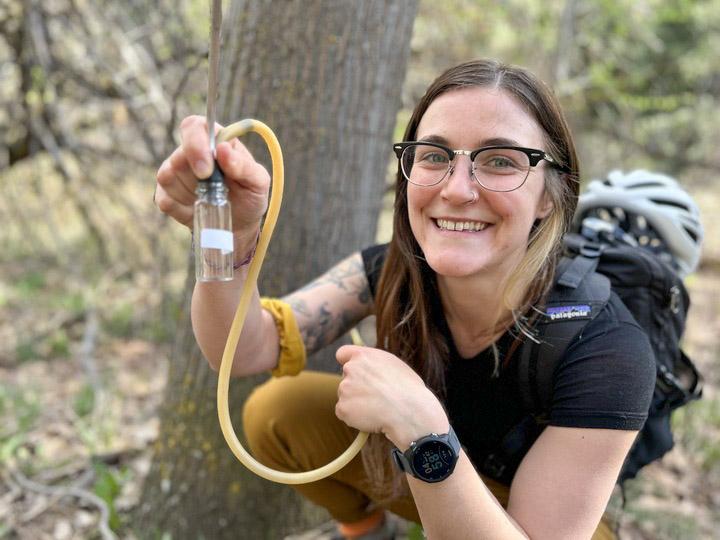
A new study from scientists at the National Oceanic and Atmospheric Administration finds wildfire smoke was a major contributor to ground-level ozone pollution along the Front Range in the summer of 2021.
The findings could shape ongoing debates over air quality regulations in Colorado’s urban corridor. State policymakers are working on a plan to bring the region into compliance with federal ozone standards, which could include bans on the sale of gas-powered lawn equipment to new limits on oil and gas extraction. The U.S. Environmental Protection Agency declared the region a “severe” ozone violator last year.
Industry representatives have already suggested the new research on wildfire smoke shows those efforts might not result in meaningful pollution reductions and want regulators to rethink their approach. Meanwhile, environmental groups say the results make local regulations all the more urgent.
Andrew Langford, a NOAA who led the study published in the “Journal of Geophysical Research: Atmospheres,” supports attempts to reduce local pollution. He also doesn't want politics to obscure a tough truth about ozone: As climate change helps drive more wildfires, smoke will add to the problem whether or not Colorado cracks down on traffic or oil and gas emissions.
"We've got all this ozone coming in that's totally out of our control," Langford said. "What that tells us is not that we should do nothing. It means we have to work even harder to lower the ozone."
Colorado's Front Range had seen wildfire smoke before, but nothing quite matched the summer of 2021.
That year brought a persistent haze from blazes across North America, obscuring mountain views and lacing the air with dangerous levels of particulate matter.
At the same time, air monitors clocked high concentrations of ground-level ozone pollution, an invisible lung irritant that's plagued the region for decades. Between June and September, the state issued a record 75 ozone action alerts, warning sensitive groups to avoid outdoor exercise. Average ozone levels exceeded EPA health standards a record 67 times.
Previous research led Langford to suspect wildfire smoke likely contributed to the problem because it contains high levels of volatile organic compounds, one of the key ingredients necessary to form ozone in the atmosphere on hot, sunny days.
The other key ingredient is nitrogen oxides, a common byproduct of combustion. In Colorado, state estimates show oil and gas operations and vehicles are the top two sources of gas along the Front Range.
Langford hypothesized the wildfire smoke reacted with local sources of nitrogen oxides, leading to higher ozone levels. If true, it would be a silver lining for efforts to improve local air quality because cutting emissions from cars and power plants could help protect people from ozone pollution — even on smoky days.
He tested the idea with a special instrument based on a technology known as a lidar, which uses a pulsing laser to estimate ozone levels in airborne smoke traveling into the state. By comparing those readings with ground-level monitors around the state, Langford said it was clear the smoke arrived in Colorado already carrying large quantities of the ozone, likely due to earlier reactions in the plume.
On some days, that smoke boosted ozone concentrations by as much as 12 parts per billion, which is more than enough to tip the state over the federal health standard of 75 parts per billion. For comparison, the Regional Air Quality Council, the lead air quality planning agency for the Front Range — and a financial supporter of CPR News — has estimated lawn and garden equipment contributes about 2.5 ppb.
Kait Schwartz, the director of the Colorado chapter of the American Petroleum Institute, said those results were 'revelatory.'
After failing to pass an air quality bill to limit oil and gas permits this year, Democratic lawmakers formed an interim committee to study the issue. Schwartz said the NOAA study is a chance to reassess the problem "rather than squeezing a single industry in an effort to score political points."
Recent state estimates suggest oil and gas drilling account for the largest source of local ozone ingredients, but it's not the main source of the problem. As the industry has often pointed out, out-of-state and natural sources remain the largest single contributor, according to state estimates.
Jeremy Nichols, the climate and energy program director for WildEarth Guardians, says those arguments helped hold back regulators for decades. He's glad there are now active efforts to crack down on local pollution sources — and hopes they’re not derailed by new science linking ozone to wildfire smoke.
"I just hope the state holds firm against those claims that this problem is somehow beyond our control," Nichols said.
Related stories
- Colorado ozone bill passes its first vote after gutting tougher requirements for new pollution sources
- Wildfire smoke and poor air quality are coming. Here’s how scientists protect their homes.
- What an atmospheric scientist wants you to know about that wildfire smoke you’re breathing
- El Niño has officially started. Here’s what it could mean for Colorado







